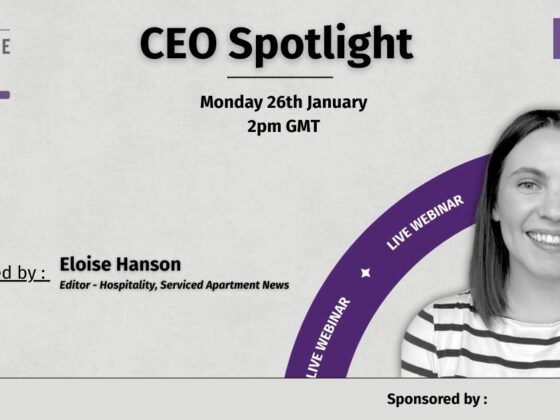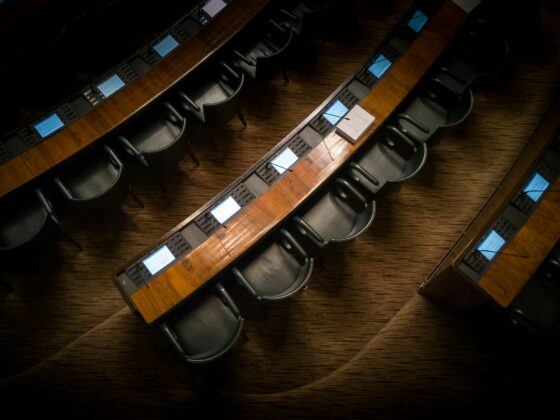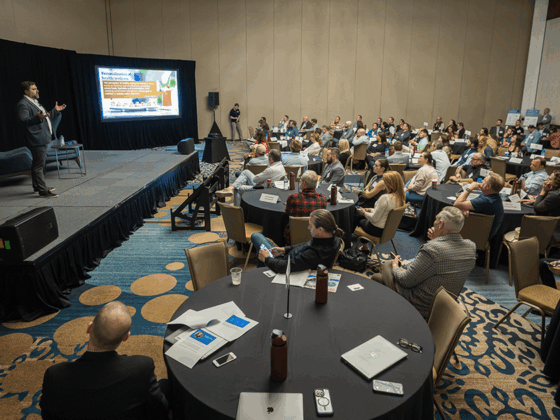
In this blog post, we will explore the five different stages of the guest journey and shed light on which associated technology can help to meet a variety of hotelier’s goals along the guest journey.
Hospitality and technology are firmly connected in today’s hotel industry. There are numerous solutions and approaches on how technology can help to engage guests throughout their journey. Possible guests – tech savvy or not – appreciate a personalized and easy-to-undertake experience that makes them feel welcome even before they arrive and after they leave. Hotels should therefore consider and invest in the right technology to support guest happiness.
From researching to booking, pre-stay to post-stay, smart use of technology can enhance the guest experience, boost revenue, and foster a loyal customer base. However, keeping an overview of the many technological possibilities isn’t quite easy with all the established, new, and ever-evolving solutions in the market.
#1 Research Phase
Here we go. A traveler has a desire to travel and starts researching options to get inspired and a lot of factors come into play. Check out the blog post with a detailed walkthrough of the traveler search and booking experience and how TrustYou’s technology such as the Meta-Review and widget supports it just at the right place and time.
We all know how important a good online reputation is when choosing a hotel. According to TrustYou’s study on the impact of reviews on booking behavior, a traveler reads 8.7 reviews before making a booking decision. Additionally to TrustYou’s helpful tools, hotels can strategically position themselves in the research phase by using smart technology such as meta-search management or ad management platforms like Triptease or D-EDGE.
To get a traveler’s attention, it’s imminent to enrich the hotel profile with relevant and targeted information, impact Google search results, and deliver a personal search experience to potential guests. Channel managers like SiteMinder ensure that the traveler can find the hotel on OTAs and to make use of the “billboard effect” and enable more direct bookings.
But obviously, price is one of the main deciding factors for travelers. Therefore, from a hotel’s perspective, effective pricing strategies are critical for maximizing revenue and profitability – and to catch the traveler at the right moment with the right offer. Revenue management systems like IdeaS, RoomPriceGenie, and Atomize offer solutions through advanced forecasting, automation, and real-time data analysis. These systems strategically manage room rates, inventory, and distribution channels to optimize revenue. By utilizing historical and market data, along with demand forecasts and predictive analytics, they recommend rates for different customer segments and room types across major distribution channels, tailored to each channel on which the hotel is selling.
#2 Booking Phase
Now this is the crucial phase that makes or breaks the deal. The traveler has completed the research and is ready to make a decision based on their most relevant factors such as price, location, reviews or specific amenities. Of course, direct bookings through the hotel website are the “most wanted” for hoteliers to save third-party commission costs and there is definitely help with technology.
A personalized booking experience on the website is definitely the key to keeping the traveler on the website and not have them go astray to book on an OTA. Using the support of direct booking platforms such as Hotelchamp or Triptease help in this matter.
A major part of engaging the guest on the website is an easy and straightforward booking experience on the website. It should therefore feature a state-of-the-art booking engine provided e.g. by Cendyn, D-EDGE or Cloudbeds.
Any remaining questions should be easily and immediately answered through a web chat, ideally supported by AI to save additional time – such as with TrustYou ChatAI. Guest review widgets should be right there to avoid that the traveler jumps off again and tries to find trustworthy opinions of other guests elsewhere.
#3 Pre-Stay Phase
We’ve entered the often underestimated pre-stay phase that shouldn’t be overlooked as important revenue could be generated and useful insights even before the guest arrives. Let’s of course not make it too obvious, we’re still thinking of the guest’s experience first. This involves effective communication and providing helpful information or services at all times.
Channels such as guest apps and other communication methods like SMS or WhatsApp help to get the conversation going or to send valuable information pre-arrival. The help of a customer data platform or customer relationship management tool shouldn’t be underestimated in this phase as they help to target the right messages to the right people at the right stage of the stay.
Upselling tools like Oaky and UpsellGuru support the hotel’s efforts to achieve more revenue even before the guest is actually there. This includes upselling rooms, services, experiences or offering special deals for F&B.
Aside from generating additional revenue through special offers or upgrades, hearing more about the guest’s preferences e.g. through pre-stay surveys gives hotels an opportunity to put that cherry on top of the guest experience with a true personal touch pre-arrival.
#4 Stay
The day has come – the guest arrives at the hotel. All the work that went into getting them to book and choose the hotel needs to now pay off with delivering a great on-site experience.
When it comes to technology, the hotel needs to decide where to invest and what to prioritize when it comes to guest engagement. Obviously, the PMS is the core of the hotel and nothing goes without it. Popular solutions are Mews, Cloudbeds, Oracle Hospitality, SIHOT, Guestline, Planet Protel or Apaleo – just to name a few. Modern cloud solutions enable seamless integrations that the guest experience can be enhanced throughout the entire stay while the hotelier has the complete overview of what is happening on-site.
Nowadays, there is no need to have the guest wait in front of the reception desk to check-out or make a payment. Check-in and check-out processes can easily be facilitated with kiosks who offer a wide range of functionalities to help the guest and process requests. Easy payment solutions, which are often integrated in a PMS or hotel management solution, run directly through the systems and require no further assistance and the guest can make their payment quickly and without any boundaries as to when and where. PMS solution Planet collected an insightful overview of popular hotel payment methods that should ideally be offered at hotels.
All of this also takes a lot of pressure off the hotel’s staff to provide a good experience for the guest. Let’s look at technology solutions that can help exactly with that. Direct and seamless communication can be enabled through guest messaging solutions such as Whistle by Cloudbeds, HiJiffy, or Canary Technologies. Keeping that line of communication between guest and hotel open, accessible and hassle-free provides for a higher chance of guest engagement and higher satisfaction.
However, let’s not wait until the guest has a question, a request or a complaint: reaching out with a pulse-check survey via popular communication channels while the guest is on-site can help to avoid a bad experience and facilitates quick service recovery. Additionally, these technologies give another opportunity for upselling and further service offerings.
The ultimate goal when the guest is on-site is to deliver exceptional service and engage them with staff, services and, of course, the brand to become a loyal customer.
#5 Post-Stay and Return
The guest journey doesn’t end when the guest leaves the hotel. We’ve entered the post-stay phase where it is critical to make sure we continue to engage with the guest. Firstly, sending them a post-stay survey, covering all the fields that are interesting and relevant to you as a hotelier, will give deep insight into what went right, wrong or just ok. The feedback will provide data and knowledge about the hotel’s performance and where and how the overall guest experience can be improved.
An important part of receiving feedback is replying to it. It’s an important tool for engaging with the guest post-stay but also to show future guests who are in the search-and-booking process that the hotelier is interested in the opinion of his customers and values feedback.
Technology can further help to tackle the next challenge: guest loyalty. Sending them targeted and personalized communication to motivate them to book again with special offers or unique experiences is the key to maintaining guest engagement. Tools such as TrustYou’s Customer Data Platform (CDP) can help to reduce the data noise and focus on what is important: the right communication to the right customer at the right time. Additionally, guest loyalty programs such as fanz support loyalty efforts and are a great way to encourage repeated bookings.
To wrap it up, it’s safe to say that without smart use of hospitality technology it is hard to engage guests throughout their journey and to keep up with the competition. It creates endless opportunities and almost every cloud-based solution can be connected with each other and make it all the way easier for the hotels to provide an engaging experience for the guest from start to end.
By investing in the right technology and understanding and optimizing the different stages, hotels can maximize revenue, create loyal customers, and ultimately stand out in a competitive industry. The guest journey doesn’t end when the guest leaves the hotel; it continues with effective post-stay engagement and loyalty efforts, demonstrating the hotel’s commitment to exceptional customer experience. Embracing innovative technology and tailored approaches is the key to success throughout the entire guest journey.








